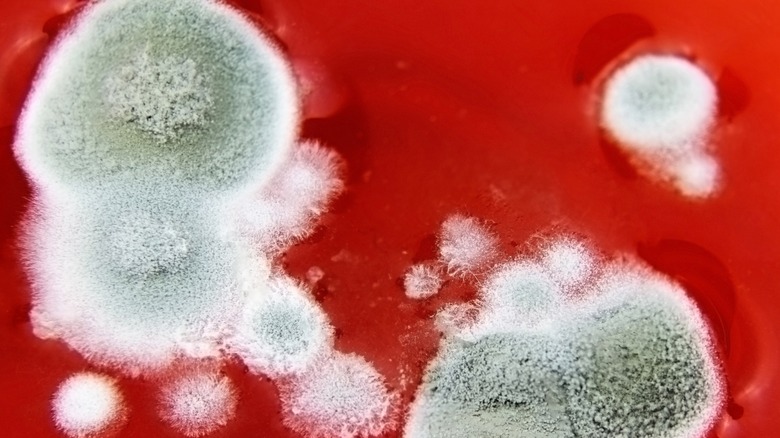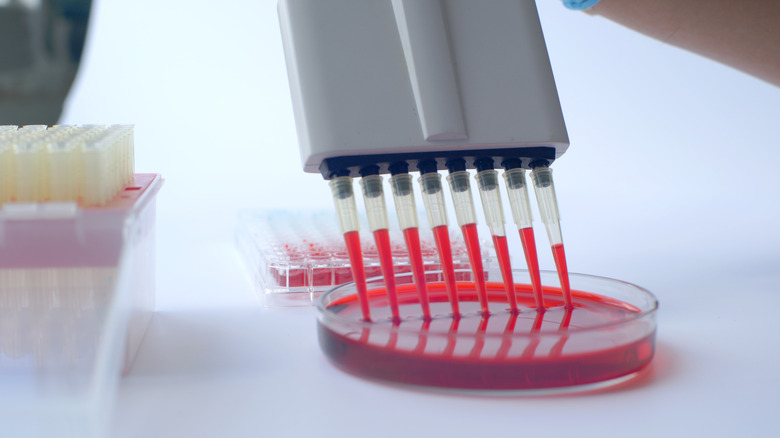What It Means When Your Hematocrit Is Low
According to the American Society of Hematology, blood is a specialized body fluid comprised of four main components: red blood cells, platelets, white blood cells, and plasma. Whole blood — which runs through our arteries, veins, and capillaries — contains 55% plasma and 45% blood cells, according to the society. Red blood cells play a vital role in the body. They transport oxygen and eliminate carbon dioxide through the lungs, as explained by the University of Rochester Medical Center (URMC).
To determine your body's percentage of red blood cells, you'll need a hematocrit test, which is usually part of a complete blood count (CBC), per Healthline. According to the Mayo Clinic, the reading for a normal hematocrit range may vary depending on gender. Usually, hematocrit levels are between 38.3% to 48.6% for men and 35.5% to 44.9% for women, per the Mayo Clinic — but what does low hematocrit mean? Here is more in-depth information on the causes and treatment options.
What does low hematocrit mean?
According to a 2022 study published in the journal StatPearls, low hematocrit levels are usually associated with anemia. Anemia is a condition where your body doesn't have enough healthy red blood cells to carry oxygen to its tissues (via Mayo Clinic). Anemia is the most common cause of low hematocrit, and blood loss due to an injury can affect your body's amount of red blood cells (via Cleveland Clinic). According to the Cleveland Clinic, other underlying conditions like hyponatremia — which is characterized by excess water in the body — can also reduce your red blood cell count.
If you have anemia, you might experience unusual symptoms, such as dizziness, fatigue, and breathing difficulties (via MedlinePlus). According to the Mayo Clinic, low hematocrit levels can also cause your skin to become pale or yellowish. Most of these symptoms start mild but intensify as anemia worsens, per the Mayo Clinic. If you notice such symptoms, it's essential to consult with your doctor early.
How is anemia treated?
According to WebMD, an anemia diagnosis usually begins with a complete blood count test to measure your red blood cells and other parts of your blood. During a consultation, your doctor might also inquire about your family and medical history. You may have to take a blood smear reticulocyte count to check for irregularities in your red blood cells, according to WebMD.
If you have anemia, treatment will vary depending on the type of anemia (per WebMD). Depending on how serious your situation is, your doctor might first recommend a dietary change. Generally speaking, certain nutrients are vital to red blood cell production. Some main ones include folic acid, vitamin A, vitamin B12, copper, and iron, which you'll find in lean meats, according to Healthline. Your doctor might also prescribe certain supplements. As per the National Heart, Lung, and Blood Institute, the supplements usually include iron and vitamin B12.
While nutrient intake supports red blood production, a higher red blood cell count is not always guaranteed through nutrition alone — your hematocrit levels may stay the same, even after adopting these dietary changes. In such cases, a blood transfusion or certain medications to stimulate red blood cell production might be required (via Healthline).



